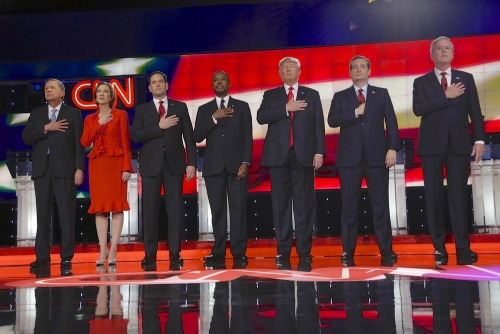 Photo Credit: Joseph Sohm / Shutterstock.com
Photo Credit: Joseph Sohm / Shutterstock.com
You don’t have to be following the 2016 Presidential Primaries in the U.S. to know that things are getting rather heated for both parties. Oftentimes candidates resort to screaming over one another to get their point across to their target audience. While the debate might become inaudible sometimes, there has been clear evidence that some candidates have put a lot of time and effort into researching their prospective voters.
While demographics are still a staple in both marketing and political campaigns the focus is turning more to audience behavior. A study from HotWire PR concluded that marketers are no longer focusing on audience age in their marketing campaigns. Instead, marketers are looking to focus on their audiences’ passions instead of their age or location.
After listening to a number of political debates, and following the news analysis afterwards, I’ve noticed similarities between political and B2B marketing campaign best practices — primarily when it comes to communicating with a target audience. Here are three takeaways I’ve gained from this year’s Presidential Primaries that can have a positive impact on any B2B marketing campaign:
1. Stop The Conceited Messaging
Ultimately, self-centered content can only get a company so far with their prospective buyers. Similarly, Trump’s attitude has played well until recently, but the candidate is beginning to see a concerted effort by pundits and politicians to discredit and blame him for his divisive rhetoric and even contest his candidacy.
Conceited messaging also can be found in the form of belittling competitors within content. While it’s important to highlight your company’s competitive positioning, focusing too much on your perceived competitor’s flaws can do more harm than good. A similar example can be found in Senator Marco Rubio’s notable hiccup during the Republican Presidential Debate in New Hampshire where he repeated the same phrase about President Obama’s record multiple times. The crowd turned against him, and he has since been playing catch-up behind other nominees.
2. Understand Your Buyers
Today’s B2B marketers can access a plethora of available audience data that they can use to target prospective buyers. The information provided by individual buyers is often most valuable when it provides a holistic view of target audiences. Hillary Rodham Clinton, for example, carefully identified her target audience — and her message style — when she announced her bid to run for President online with a 2-minute commercial.
Understanding your buyers’ needs can provide insight into multiple components of a marketing campaign — from creating content to enhancing targeting capabilities through email and social channels.
3. Be Authentic
Author and Historian Craig Shirley addressed the topic of authenticity on CNN when the 2016 race for the White House began. He said voters are looking for a candidate who speaks the truth instead of the vanity metrics they hear coming from all the other candidates.
By following step one and two, B2B marketers are positioned to create a more authentic brand experience with their customers by leveraging information obtained from buyers to personalize experiences and answer their pain points. However, it’s crucial for marketers to hold onto that authentic mindset in marketing campaigns to keep messaging and experiences consistent.







